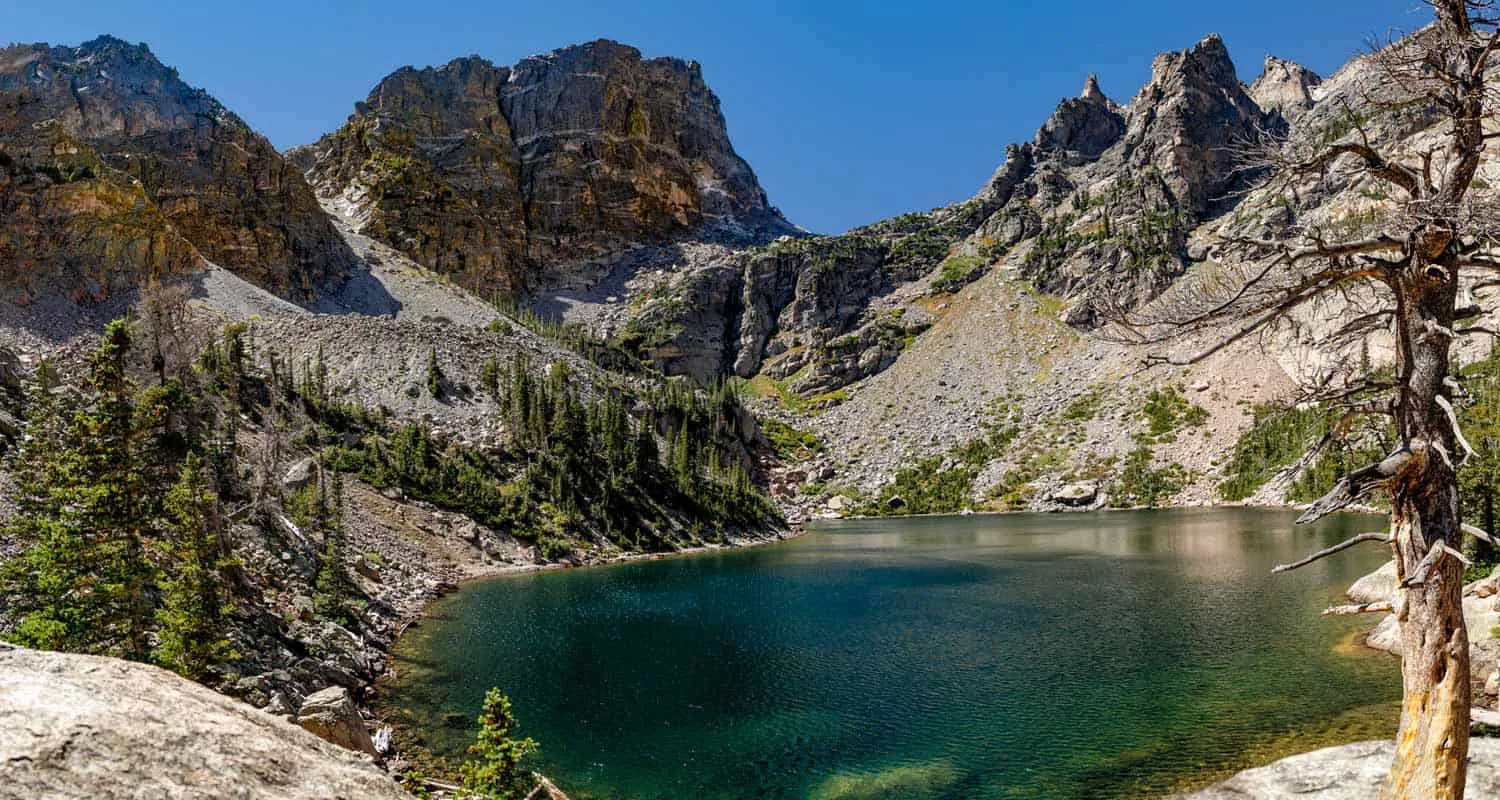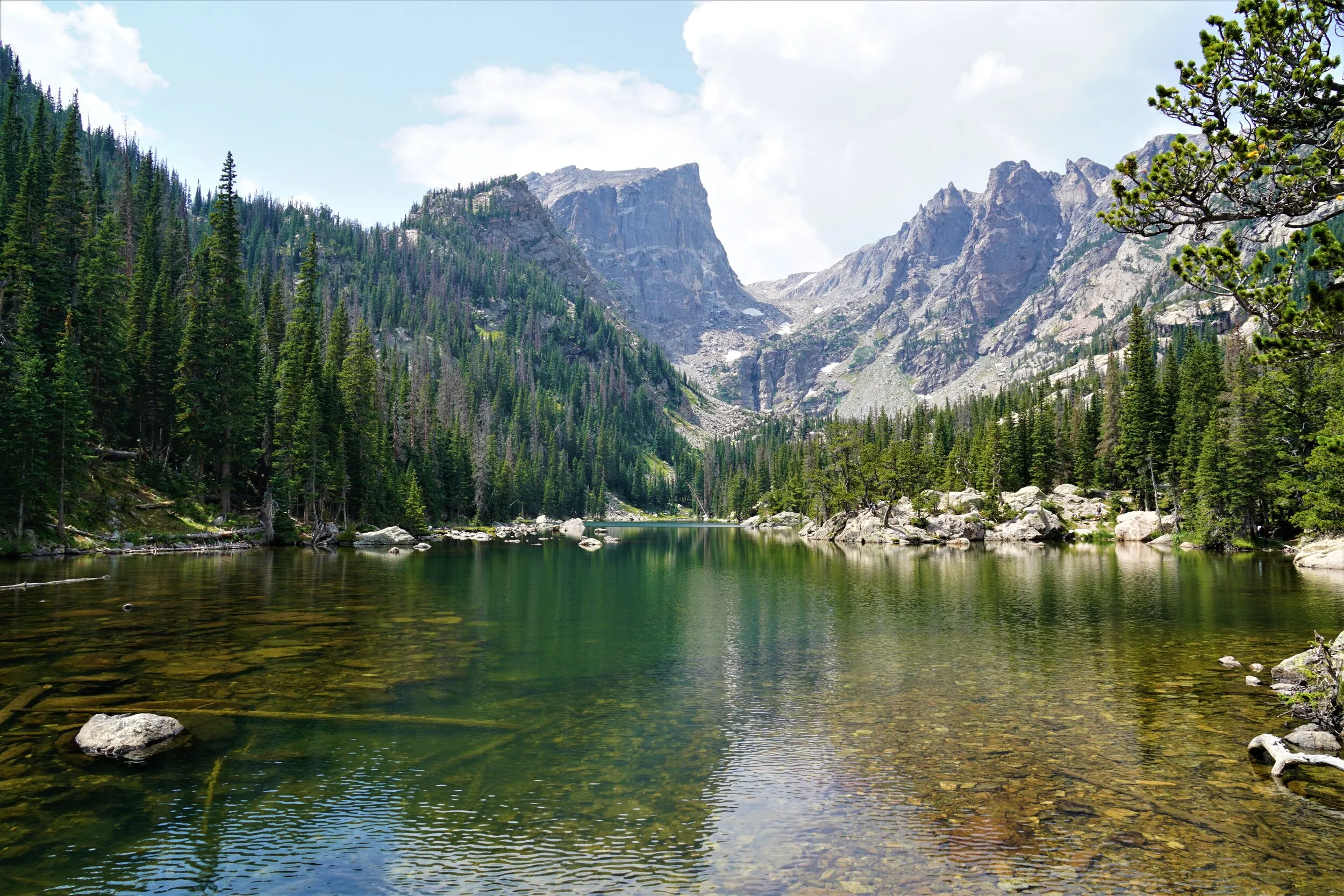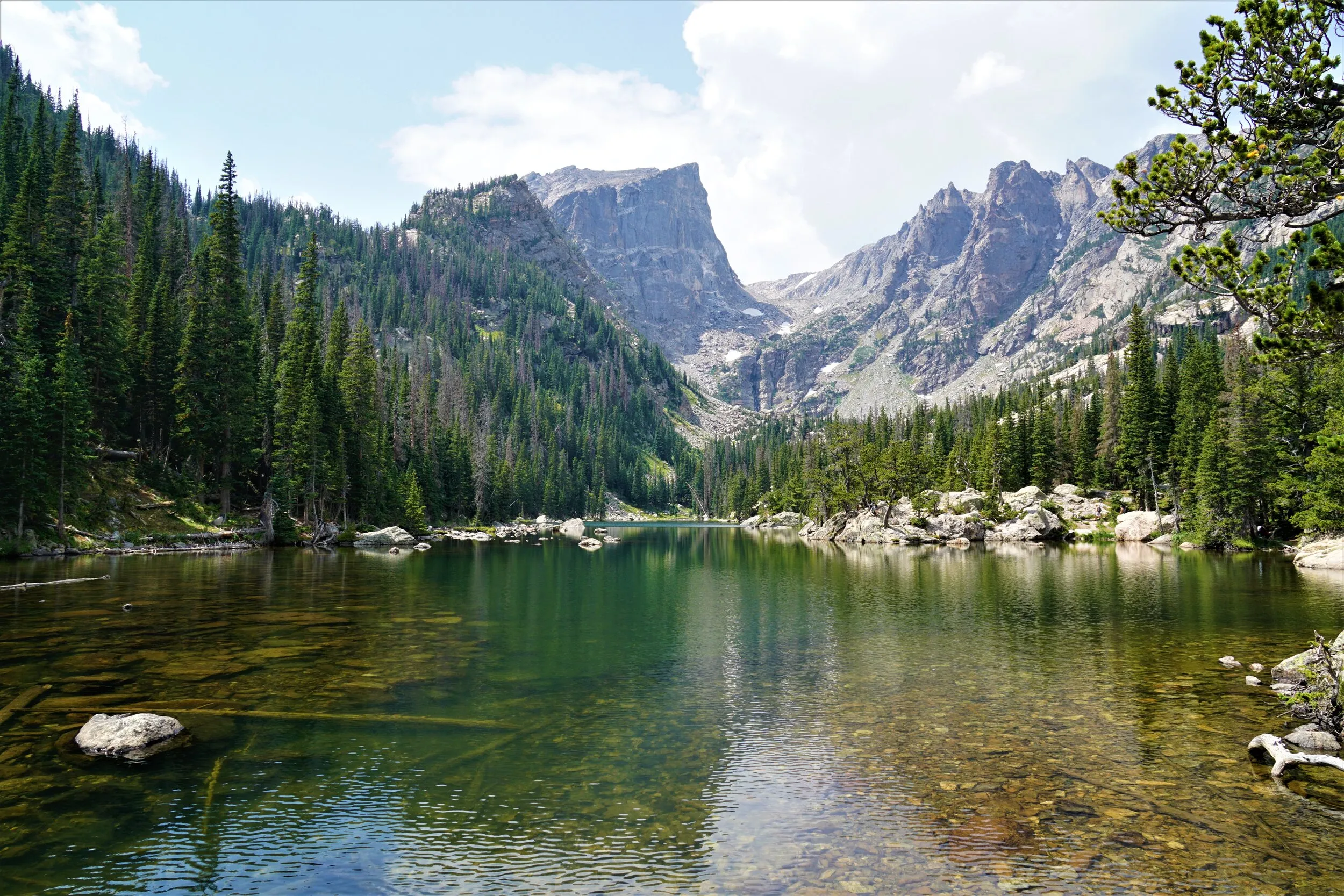Your Ultimate Guide to the Most Breathtaking Alpine Adventures
I've spent over a decade exploring the majestic Rocky Mountain National Park, and I can confidently say that the Rocky Mountains scenic hikes offer some of the most spectacular alpine experiences in North America. From my first sunrise at Emerald Lake to conquering the challenging Longs Peak trail, these mountains have taught me invaluable lessons about preparation, respect for nature, and the pure joy of wilderness exploration. This comprehensive guide combines my personal experiences with insider tips from park rangers, local guides, and fellow hiking enthusiasts to help you discover the most breathtaking trails these magnificent mountains have to offer.
Essential Planning for Rocky Mountains Scenic Hikes
Advance Reservations
Rocky Mountain National Park requires timed entry reservations during peak season (May-October). I learned this the hard way during my first visit in 2019 when I was turned away at the gate! Book your reservations at Recreation.gov at least 30 days in advance, especially for Bear Lake Road access where many of the most scenic Rocky Mountains scenic hikes begin.
Early Morning Strategy
During my seven years of exploring these trails, I've discovered that starting your Rocky Mountains scenic hikes before 6 AM dramatically improves your experience. You'll avoid crowds, secure parking at popular trailheads, and witness magical sunrise moments that transform ordinary landscapes into extraordinary vistas.
Altitude Acclimatization
Having guided visitors from sea level, I cannot stress enough the importance of proper altitude acclimatization. Most Rocky Mountains scenic hikes start between 8,000-12,000 feet elevation. Spend at least 24-48 hours in the area before attempting strenuous hikes. I recommend starting with easier trails like Bear Lake Nature Trail (0.6 miles) before progressing to challenging routes like Longs Peak.
Pro tip: Arrive in Denver a day early and explore under-the-radar hikes in the US around the city to begin your acclimatization process gradually.

After countless conversations with park rangers and fellow hikers, I've compiled essential insights that can make or break your Rocky Mountains scenic hikes experience. The park's unique alpine environment demands respect and preparation. Weather can change within minutes, transforming a pleasant morning hike into a dangerous situation. I always carry emergency gear and inform someone of my hiking plans, especially when exploring best secret hiking trails in remote areas of the park.
Top 15 Most Spectacular Rocky Mountains Scenic Hikes
1. Emerald Lake Trail (Easy)
Distance: 3.2 miles | Elevation Gain: 702 ft | Duration: 2-3 hours
This crown jewel of Rocky Mountains scenic hikes takes you past three pristine alpine lakes: Nymph, Dream, and Emerald. I've hiked this trail over 50 times, and it never fails to amaze me. The reflection of Hallett Peak in Dream Lake at sunrise is absolutely magical.
Personal tip: Visit during mid-September for stunning fall colors and fewer crowds.
2. Sky Pond Trail (Challenging)
Distance: 9.4 miles | Elevation Gain: 1,774 ft | Duration: 5-7 hours
One of the most rewarding Rocky Mountains scenic hikes, featuring a thrilling scramble up Timberline Falls. The amphitheater surrounding Sky Pond is breathtaking. I recommend waterproof gloves for the rock scramble section.
Warning: The waterfall scramble can be dangerous when wet or icy. Check conditions with rangers.
3. Chasm Lake Trail (Challenging)
Distance: 8.8 miles | Elevation Gain: 2,552 ft | Duration: 5-6 hours
This spectacular hike leads to a pristine alpine lake nestled beneath the imposing east face of Longs Peak. The final approach involves boulder hopping and offers incredible views of the Diamond Face.
Best experienced in early morning to avoid afternoon thunderstorms common at high elevation.
4. Gem Lake Trail (Moderate)
Distance: 3.2 miles | Elevation Gain: 987 ft | Duration: 2-3 hours
A unique Rocky Mountains scenic hike featuring fascinating rock formations and panoramic views of Estes Park. The trail winds through the Lumpy Ridge area, offering a different perspective from the typical lake hikes.
Perfect for photographing sunrise over the eastern plains while enjoying mountain views to the west.
5. The Loch via Glacier Gorge (Moderate)
Distance: 5.4 miles | Elevation Gain: 1,062 ft | Duration: 3-4 hours
This serene alpine lake surrounded by towering peaks offers excellent photo opportunities. The trail passes Alberta Falls and provides a perfect introduction to Rocky Mountains scenic hikes for intermediate hikers.
Less crowded than Emerald Lake but equally beautiful, especially in early morning light.
6. Longs Peak via Keyhole Route (Expert)
Distance: 14.5 miles | Elevation Gain: 5,100 ft | Duration: 10-15 hours
Colorado's northernmost fourteener and the ultimate Rocky Mountains scenic hike. This technical scramble requires alpine climbing experience. I've summited three times, and each ascent taught me something new about mountain respect and preparation.
Start before 3 AM to avoid afternoon thunderstorms. Technical sections require helmets and experience.

Additional Must-Do Rocky Mountains Scenic Hikes
- Alberta Falls Trail (1.6 miles) - Perfect family-friendly introduction to mountain hiking
- Bear Lake Nature Trail (0.6 miles) - Easy loop with stunning mountain reflections
- Mills Lake Trail (5.2 miles) - Classic view of Longs Peak and Keyboard of the Winds
- Deer Mountain Summit (6.0 miles) - 360-degree panoramic views
- Twin Sisters Peaks (7.4 miles) - Outstanding vistas in all directions
- Flattop Mountain (8.8 miles) - Continental Divide crossing experience
- Ute Trail to Tombstone Ridge (5.7 miles) - High alpine tundra adventure
- Lake Haiyaha (4.0 miles) - Boulder-surrounded mountain lake
- Black Lake Trail (10.0 miles) - Remote alpine lake experience
My extensive experience with Rocky Mountains scenic hikes has taught me that each trail offers unique rewards. Some days call for challenging adventures like Longs Peak, while others are perfect for peaceful contemplation at Dream Lake. The key is matching your energy, experience level, and weather conditions to the right trail. I've found that exploring remote hikes in Europe has actually improved my appreciation for the accessibility and beauty of these Colorado gems.
Seasonal Guide to Rocky Mountains Scenic Hikes
Spring (May-June)
Spring in the Rockies is magical but unpredictable. Lower elevation trails like Gem Lake and Alberta Falls are usually accessible, while high alpine routes may still have snow. Wildflowers begin blooming in late May.
- Perfect weather for moderate hikes
- Fewer crowds than summer
- Some high-elevation trails closed
- Mud season can make trails messy
Summer (July-August)
Peak season for Rocky Mountains scenic hikes with all trails accessible. Expect crowds but also the most stable weather. Alpine wildflowers peak in July. Afternoon thunderstorms are common above treeline.
- All trails accessible
- Best weather conditions
- Peak wildflower season
- Crowded popular trails
- Afternoon thunderstorms
Fall (September-October)
My favorite season for Rocky Mountains scenic hikes! Aspen trees turn brilliant gold, crowds diminish, and weather remains pleasant. September offers the perfect balance of accessibility and beauty.
- Spectacular fall colors
- Comfortable temperatures
- Fewer crowds
- Most trails still accessible
- Shorter daylight hours
Winter (November-April)
Winter transforms Rocky Mountains scenic hikes into snowshoe adventures. Lower trails like Bear Lake and Alberta Falls offer magical winter experiences, while high alpine routes require mountaineering skills.
- Peaceful, snow-covered landscapes
- Snowshoeing opportunities
- Limited trail access
- Cold temperatures
- Trail Ridge Road closed
Weather Patterns and Timing
After years of experience, I've learned that weather in the Rockies can change rapidly. Summer afternoon thunderstorms typically develop between 11 AM and 4 PM, making early morning starts essential for high-elevation Rocky Mountains scenic hikes. I always check the extended forecast and have backup plans for indoor activities in nearby Estes Park.
Temperature variations can be extreme - I've experienced 30-degree temperature swings between trailhead and summit. Layering is crucial, and I always pack extra clothes even for day hikes. The dry mountain air also increases dehydration risk, so I typically carry 50% more water than I would for similar hikes at sea level.
Essential Gear & Equipment for Rocky Mountains Scenic Hikes
My Tested Gear Recommendations
Over thousands of miles on Rocky Mountains scenic hikes, I've refined my gear selection to items that consistently perform in the challenging mountain environment. These recommendations come from personal testing, ranger feedback, and input from fellow hiking enthusiasts who frequent these trails.
Remember: gear failure at 12,000 feet isn't just inconvenient - it can be dangerous. Invest in quality equipment and test everything before your trip.
Premium Hiking Boots
Quality hiking boots are non-negotiable for Rocky Mountains scenic hikes. I personally use and recommend waterproof boots with excellent ankle support for the rocky, uneven terrain.
Recommended: Salomon Quest 4 GTX Hiking Boots
Waterproof, durable, excellent for Rocky Mountain terrain
Check Latest Price on AmazonI've tested these boots on over 200 miles of Rocky Mountain trails. Excellent grip on wet rocks and comfortable for all-day wear.
Day Hiking Backpack
A quality daypack makes all the difference on longer Rocky Mountains scenic hikes. Look for features like hydration compatibility, multiple compartments, and comfortable padding.
Recommended: Osprey Daylite Plus 20L Backpack
Perfect size for day hikes, comfortable fit, durable construction
Check Latest Price on AmazonThis has been my go-to pack for 3 years. Comfortable on 8+ hour hikes and fits all essential gear perfectly.
Trekking Poles
Essential for stability on rocky terrain and reducing knee stress on steep descents. I use trekking poles on all Rocky Mountains scenic hikes over 3 miles.
Recommended: Black Diamond Trail Sport Trekking Poles
Lightweight, adjustable, comfortable cork grips
Check Latest Price on AmazonThese poles have saved me from countless slips on wet rocks and steep sections. Highly recommended for safety.
Hydration System
Staying hydrated at altitude is crucial. I carry more water than needed and use electrolyte supplements for longer Rocky Mountains scenic hikes.
Recommended: Hydro Flask 32oz Wide Mouth Bottle
Insulated, durable, easy to fill, keeps water cold all day
Check Latest Price on AmazonIce-cold water tastes amazing after climbing 2000 feet! This bottle keeps drinks cold for 12+ hours even in summer heat.
Essential Safety and Navigation Gear
- Navigation: GPS device or smartphone with offline maps
- Emergency: Whistle, emergency bivvy, first aid kit
- Weather: Rain jacket, warm layers, hat and gloves
- Sun protection: Sunglasses, sunscreen (SPF 30+), hat
- Food: High-energy snacks, extra food
- Water: Extra water, purification tablets
- Tools: Multi-tool, duct tape, headlamp
- Communication: Cell phone, emergency contact info
I've used every item on this list during emergencies on Rocky Mountains scenic hikes. Don't skip the essentials - your safety depends on proper preparation.
The key to successful Rocky Mountains scenic hikes lies in the details. Quality gear doesn't just enhance your experience - it ensures your safety and comfort in the demanding mountain environment. I've learned through experience that cutting corners on essential equipment often leads to uncomfortable or even dangerous situations. If you're planning to explore off-beaten hikes in Asia after mastering these Colorado trails, the same gear principles apply - invest in quality, test everything, and always be prepared for changing conditions.
Safety Tips & Trail Etiquette for Rocky Mountains Scenic Hikes
Critical Safety Considerations
During my years of Rocky Mountains scenic hikes, I've witnessed numerous emergencies that could have been prevented with proper preparation and awareness. Mountain environments are unforgiving, and what starts as a minor mistake can quickly escalate into a life-threatening situation.
Remember: rescue operations at high altitude are complex, expensive, and dangerous for rescue personnel. Your safety decisions affect not just you, but potentially the brave men and women who might need to risk their lives to help you.
Lightning Safety Protocol
Lightning strikes are the #1 weather-related fatality risk on Rocky Mountains scenic hikes. I've been caught in several storms and learned crucial survival techniques from search and rescue professionals.
- Start early - be below treeline by noon during thunderstorm season
- Monitor weather constantly - conditions change rapidly
- If thunder follows lightning by 30 seconds or less, seek immediate shelter
- Avoid exposed ridges, tall trees, and metal objects
- If caught in open, crouch low with feet together, don't lie flat
Altitude Sickness Recognition
Altitude sickness affects many visitors on Rocky Mountains scenic hikes. Recognizing symptoms early can prevent serious complications.
- Mild symptoms: Headache, nausea, fatigue, dizziness
- Serious symptoms: Confusion, difficulty breathing, loss of coordination
- Treatment: Descend immediately if symptoms worsen
- Prevention: Ascend gradually, stay hydrated, avoid alcohol
Wildlife Safety Guidelines
Rocky Mountains scenic hikes offer incredible wildlife viewing, but encounters require proper protocol for your safety and animal welfare.
- Black bears: Make noise, carry bear spray, store food properly
- Mountain lions: Maintain eye contact, appear large, back away slowly
- Elk/Moose: Keep 25+ yards distance, especially during rutting season
- Never feed wildlife - it's dangerous and illegal
Navigation Best Practices
Getting lost on Rocky Mountains scenic hikes can be life-threatening. Modern technology helps, but backup navigation skills are essential.
- Download offline maps before hiking (cell service is spotty)
- Carry physical map and compass as backup
- Mark waypoints at trail junctions and key landmarks
- Turn around periodically to memorize return route
- Share your hiking plan with someone reliable
Trail Etiquette and Leave No Trace
Preserving the beauty of Rocky Mountains scenic hikes for future generations requires every visitor to follow established etiquette and environmental principles.
Trail Courtesy
- Yield to uphill hikers
- Step aside for horses
- Keep groups small (6 people max)
- Keep noise levels down
- Control pets on leash
Environmental Protection
- Pack out all trash
- Stay on designated trails
- Don't pick flowers or disturb rocks
- Minimize campfire impact
- Respect wildlife viewing distances
I've seen the impact of inconsiderate behavior on trail conditions and wildlife patterns. Every small action matters in preserving these magnificent Rocky Mountains scenic hikes for future adventurers.
My philosophy on mountain safety is simple: respect the environment, prepare thoroughly, and never let ego override good judgment. I've turned back from summit attempts due to weather, helped injured hikers, and made countless conservative decisions that ensured I could return for more adventures. The mountains will always be there - make sure you are too. These safety principles apply whether you're exploring Rocky Mountains scenic hikes or planning off-beaten hikes in Asia - the fundamentals of safety and respect for nature remain constant across all wilderness environments.
Conclusion
After a decade of exploring Rocky Mountains scenic hikes, I can confidently say that these trails offer some of the most rewarding outdoor experiences in North America. From the gentle beauty of Bear Lake to the challenging ascent of Longs Peak, each trail has taught me something valuable about nature, preparation, and personal limits.
The magic of Rocky Mountains scenic hikes lies not just in the stunning vistas and pristine alpine lakes, but in the complete sensory experience - the crisp mountain air at dawn, the sound of wind through the pines, the satisfaction of reaching a hard-earned summit, and the peaceful reflection that comes from hours in wilderness silence.
Whether you're planning your first visit or your fiftieth, remember that these mountains demand respect, preparation, and patience. Start with easier trails to acclimate, invest in quality gear, and always prioritize safety over summit fever. The relationships you'll build with fellow hikers, the wildlife encounters you'll experience, and the personal growth that comes from challenging yourself in this magnificent environment will create memories lasting a lifetime.
Start Your Rocky Mountains Adventure Today
Ready to experience the magic of Rocky Mountains scenic hikes for yourself? Remember to book your timed entry reservations early, prepare thoroughly, and most importantly - embrace the journey with an open heart and mind.
Visit Nature Guests for more detailed trail guides, gear recommendations, and insider tips to make your mountain adventures unforgettable.



